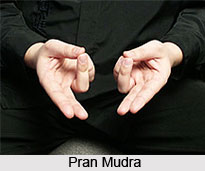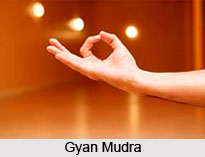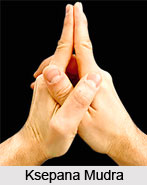 Purposes of mudra are several which influence the body and soul of an individual in various ways. Each mudra involved in the yoga serves for a specific and unique purpose. There are many mudras and each one has a specific purpose. Each mudra serves a purpose like there are mudras for energy, concentration, memory and anxiety. There are mudras that are known for their healing properties in asthma, headaches, heart problems, back and joint issues, hearing, and blood pressure. Mudras are practiced by each and every individual in every postures and every work involved in the daily agenda. The involvement of mudras in the daily life ushers the human mind to form the exact goodness of personality, character, self awareness, mannerisms and expressions. Mudra is a cachet of energy. Mudras are the execution of the fingers, but some mudras involve the involvement of the whole body. The execution of mudras is called the divine finger play.
Purposes of mudra are several which influence the body and soul of an individual in various ways. Each mudra involved in the yoga serves for a specific and unique purpose. There are many mudras and each one has a specific purpose. Each mudra serves a purpose like there are mudras for energy, concentration, memory and anxiety. There are mudras that are known for their healing properties in asthma, headaches, heart problems, back and joint issues, hearing, and blood pressure. Mudras are practiced by each and every individual in every postures and every work involved in the daily agenda. The involvement of mudras in the daily life ushers the human mind to form the exact goodness of personality, character, self awareness, mannerisms and expressions. Mudra is a cachet of energy. Mudras are the execution of the fingers, but some mudras involve the involvement of the whole body. The execution of mudras is called the divine finger play.
Activating Dormant Potentials
One of the purposes of mudra is to awaken the hibernating potential by awakening the neuronal circuits in the brain and charging the system with pranic energy, and helping the soul to achieve the higher consciousness. The physical aspects of yoga and mudra lead to control the involuntary organs of the body by stimulating the nerve connections and hormone secreting endocrine glands. This process helps to master the process of the entire physical system as well as disentangling the mental complications and leading towards the realization of the inner potentiality and the storage of immense energy.
Controlling Physiological Processes
Another purpose of Mudras is also to control the involuntary physiological processes of the body. Mudras display gestures that convey signals to the mind and soul that soothes the soul and keeps a balance of mind and body and release energy.
 The practice of mudras directs the adjustment of intensity and direction of flow, and thereby regulates the different systems of the body. The stimulation and balance of Sushumna and the relief of soul is derived due to the practice of mudra in daily life. Mudra also leads to the involvement of Prana and leads to the development of awareness of the currents of prana which is the vital energy, within the subtle body and sometime steers for pranic healing.
The practice of mudras directs the adjustment of intensity and direction of flow, and thereby regulates the different systems of the body. The stimulation and balance of Sushumna and the relief of soul is derived due to the practice of mudra in daily life. Mudra also leads to the involvement of Prana and leads to the development of awareness of the currents of prana which is the vital energy, within the subtle body and sometime steers for pranic healing.
Evoking Mental Consciousness
Mudras prepare the mind for meditation and encourages the withdrawal of senses or pratyahara and also make the mind single centred. Many mudras combine asanas and pranayama and these brings an additional gain of these practices. The consciousness of mind achieved by the practice of mudra along with asana and pranayama leads to spiritual benefits.
Stimulation of Nerves
Purpose of mudra is also related to the stimulation of certain nerves. Each finger has a definite and powerful effect on the brain to perform. In mudra, the hands are placed in a particular configuration; the neuronal circuits are stimulated for a prolonged period of time. This reinforces the specific effect of the mudra on the brain. When the right and left hands are both stimulating the brain, the effect is to bring the two hemispheres under the conscious control of human mind. The circuits stimulated are brought into the sphere of conscious awareness.
Enhancing Mental Stability
The prana as well as the body is manipulated by the practice of mudras. The mudras lead the release of energies and lead to the stimulation of separate channels. Quite ideally therefore the purpose of mudra is to increase the mental stability and enhance awareness.
 The negative energies stuck in the human body are replaced by the positive energies derived from the practice of mudras. It allows the mind to concentrate and integrate the mind and lead the life with renewed energies and strength of body and mind.
The negative energies stuck in the human body are replaced by the positive energies derived from the practice of mudras. It allows the mind to concentrate and integrate the mind and lead the life with renewed energies and strength of body and mind.
Generating Positive Powers
Purpose of the mudras also lies in bringing about miraculous changes and improvement in human body and soul. This generates the positive power that is the source of peace and happiness. Mudras are often used as bringing relief from some illness related to mind and sometimes to cure the illness of body. According to some medicinal research, practise of some Mudras on a regular basis can cure insomnia, arthritis and memory loss and can lead to a healthy mind and soul. The experts of yoga say that mudras help in Kundalini Yoga to awaken the cosmic energy.




















